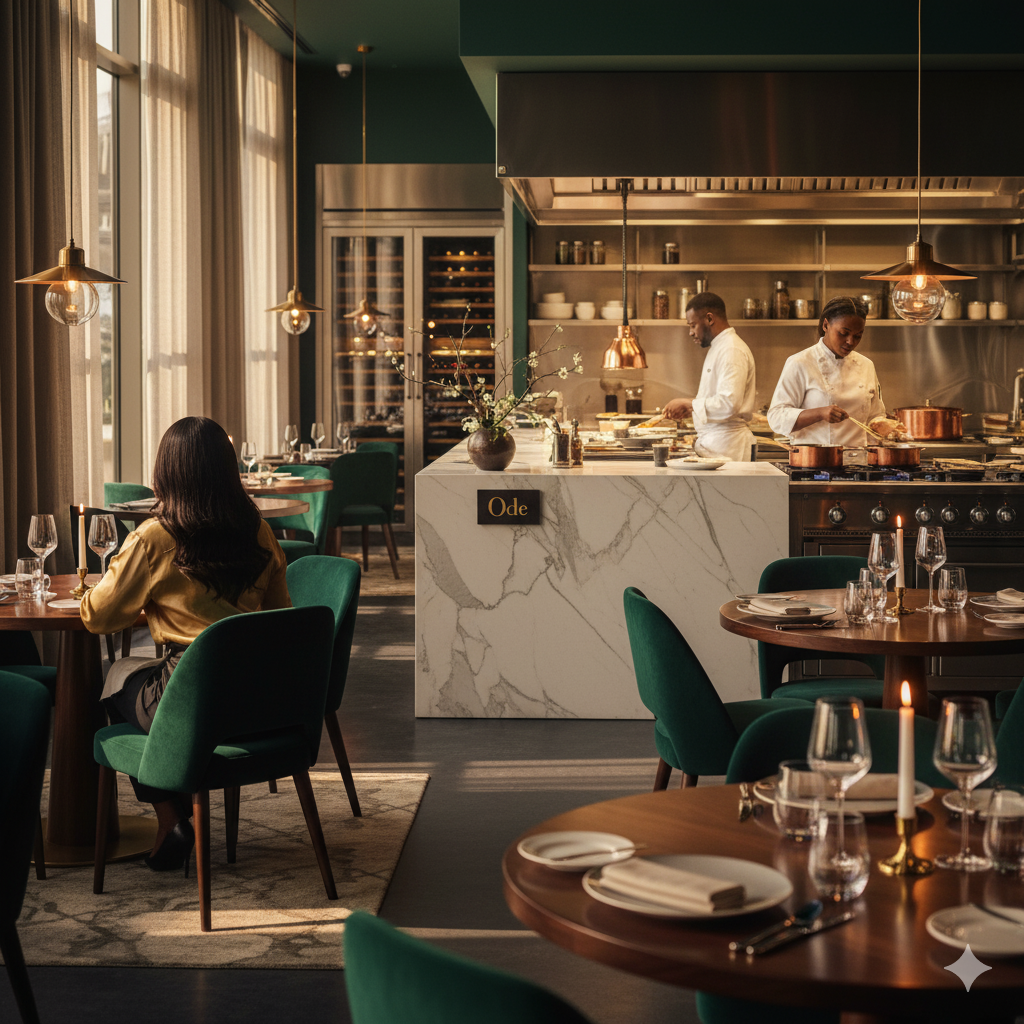Space.
Systems Intelligence applied to spatial perception.
An ode to environments that choreograph experience
AI-generated image using Gemini. See the prompt here.
Space is an interface between you and the system you’re standing in.
A coffee shop that says, “stay, work, take your time,”
is a different universe from one that says, “order, pay, leave.”
A hotel lobby with soft carpet and no clocks isn’t just cozy,
it’s teaching your body to slow down.
When I tour apartments,
I never like walking in and seeing the kitchen first:
it feels like entering through function before identity.
To me, a home should unfold with intention:
an entryway that slows you down,
not one that rushes you into utility.
Restaurants do the same kind of coding.
An open kitchen is like a small theater:
it says, you’re part of the process.
You can see the choreography, the craft.
In fine dining, the kitchen vanishes.
Silence becomes part of the luxury, but also a signal
that this space isn’t for everyone.
You’re meant to observe, not belong.
Casual restaurants feel different:
warm light, background noise, shared tables.
They tell you it’s okay to exhale;
to join the atmosphere rather than disturb it.
Fast food designs for speed.
Everything, the lighting, acoustics, and texture,
tells you your stay is temporary.
Each type of place writes its own social code.
The space quietly decides what kind of presence you’re allowed to have.
Spaces that feel effortless are just spaces with really good behavioral modeling.
Space is systems intelligence you can walk through.
To move with awareness inside a space is to see design not as background, but as feedback made physical.
How Space Connects to the Other 7
TASTE → What you eat takes up space; not just on a plate, but in memory.
SIGHT → Light decides what you notice. What’s bright feels important; what’s dim becomes background.
SOUND → Quiet spaces whisper intimacy. Loud spaces invite everyone, but make it harder to truly hear anyone.
SCENT → Every space has a smell that tells its story.
TOUCH → Materials around you teach your body how to behave. Soft textures say “stay.” Hard edges say “move.”
TIME → Ask any space: what is it doing to your sense of time? Airports stretch it, cafés slow it, subways compress it. The “vibe” is just how time feels inside a room.
SYSTEM → System is the logic beneath the atmosphere; the pattern that organizes everything you sense.
When Space Becomes Experience
These aren't sponsorships, just examples:
Hospitality & Restaurants
Satellite House Complex (Mexico City)
Airbnb
Starbucks Reserve Roasteries
Omoide Yokocho Memory Lane (Tokyo Japan)
Retail
Muji
Trader Joe’s
Modern Shopping Malls
Mobility
Tesla
Trains in Japan
Airports like Changi (Singapore)
Culture & Art
The MET (New York)
Zeitz MOCAA (Cape Town)
Yayoi Kusama’s Infinity Rooms

